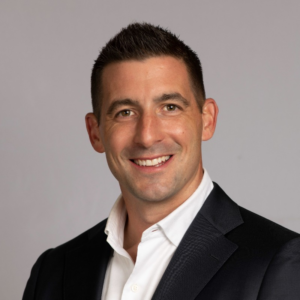Double-check for disaster
Not long ago I had the severe displeasure of reading a book called The Edge of Disaster by one Stephen Flynn*. Mr. Flynn is billed in the author blurb as being “among the world’s most widely cited experts in homeland security and trade and transportation security issues.” I say “severe displeasure” not as a reflection on Flynn’s book—it is, in fact, a well-written and highly educational discussion of America’s infrastructure and the country’s risk-taking population and ineffective government. My “displeasure” alludes, rather, to the intense nervousness I’m experiencing.
Basically Flynn tells several disturbing stories—for example, of segments of our population who are just asking by their choice of residential locations to be sandbagged by nature; of a federal government so oversold on the virtues of small government that needed leadership is missing; of an aging infrastructure already stretched to the breaking point and in no way ready to accommodate extra stress.
When I turned to the pages addressing our healthcare system, I thought perhaps here we would catch Mr. “Trade and Transportation Expert” in some sort of knowledge shortfall. Sure enough, he discusses how our hospitals, in particular our emergency departments, are sorely unprepared to deal with a surge of population from any disaster, man-made or natural. Aha, I thought, surely such basic services as healthcare and long-term care have done something since Hurricane Katrina to better position themselves for disaster. Flynn was no doubt unaware, for instance, of the highly imaginative work described in an article our sister publication, HEALTHCARE DESIGN, published in November 2005.
Called “‘SURGE’ Hospitals: A New Concept in Disaster Medical Care,” it discussed a Medical Readiness Conference organized by the Texas A&M University System Health Science Center and College of Architecture in December 2004. The article described model SURGE hospital concepts developed by 17 two-person teams of College of Architecture students. With great creativity and ingenuity, the students presented a set of imaginative networks of hospitals, hotels, schools, convention centers, and open-field tent cities, serviced by mobile medical units, all organized as a first-response healthcare system for natural or man-made disasters. Rereading this article gave me heart. Perhaps it was time, I thought, for a follow-up article on the progress being made.
Long story short: There will be no such follow-up article in HEALTHCARE DESIGN. From what I’ve been able to determine, nothing much has happened since the conference was held or the article published, and the apparent reason is fairly predictable: most of the facilities are privately owned, and very few private entities—no matter how well intentioned—want to place themselves at a competitive disadvantage in their daily marketplace by making unique investments in disaster preparedness. Leadership and common rules of the game are required for such an effort and, as Flynn points out numerous times, these have been sorely lacking from today’s federal government.
I remember writing, also in November 2005, an editorial for this publication called “Katrina’s Lesson.” In it I extolled the farsighted views of American Health Care Association President/CEO Bruce Yarwood, who noted that LTC providers had to work with society as a whole to disaster-proof themselves for the next major mishap. Now I’m starting to wonder. Perhaps it’s time to double-check your facility’s disaster readiness and possibilities for improvement. If nothing else, it would make me feel better.
The Edge of Disasterby Stephen Flynn. Published by Random House, New York, 2007.
RICHARD L. PECK, EDITOR-IN-CHIEF
To send your comments on this editorial to the author and editors, e-mail peck0407@nursinghomesmagazine.com.

Richard L. Peck was editor in chief of I Advance Senior Care / Long-Term Living for 18 years. For eight years previous to that, he served as editor of the clinical magazine Geriatrics. He has written extensively on developments in the field of senior care and housing.
Related Articles
Topics: Articles , Facility management , Operations , Risk Management











